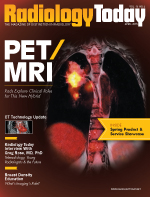 April 2015
April 2015
Managing to Succeed: Shop for Terms, Not Just Equipment — Five Tips for Securing the Right Equipment Financing
By Justin Tabone
Radiology Today
Vol. 16 No. 4 P. 32
Uncertainty around the health care industry, including unpredictability of future reimbursements under the Affordable Care Act (ACA), has generated indecision in radiology. Many organizations put off equipment purchases and technology upgrades last year.
A study conducted by EverBank Commercial Finance at RSNA 2014 found that the top priorities for capital spending for the majority of organizations this year will be upgrading existing equipment or technology (60%) and expanding into a new building or facility (21%).
Rather than continuing to operate under uncertainty, now is the time for doctors to evaluate their financing options and consider strategic financing opportunities that will keep their offices on the cutting edge.
Here are some tips for financing equipment for a hospital or radiology practice.
1. Leverage industry expertise. Expertise in the health care industry is a major asset in a potential financing partner. For example, the ACA includes Medicaid payment reforms. Significant changes in the reimbursement model have created an increased emphasis on making sound economic decisions when evaluating capital equipment purchases. Partnering with a finance company that understands those nuances can make identifying the financing solution that best meets your cash flow needs much easier. Finance companies that have dedicated health care teams are often subject-matter experts dialed in to the industry issues, which often benefits the client in the long run.
2. Look beyond interest rates when considering financing arrangements. While the interest rate is certainly a factor to consider when evaluating your financing options, it shouldn't be the sole factor in evaluating a financing arrangement. Other factors to consider include advance and deferred payments, covenants, fees, fixed or floating structures, and prepayment ability. These elements can and should be tailored to your company's specific situation and can individually provide unique benefits to any financing arrangement. Many hospitals and practices overlook options for financing, missing out on solutions that may benefit them.
3. Consider creative financing structures. Carefully evaluating available financing structures for your equipment can often be frustrating and confusing. Focus on identifying options that work well with your anticipated reimbursement schedule. Fee-per-use programs are an effective way to better align costs and reimbursements.
Step-up and deferred payments are another option to consider when implementing new technology. Deferred payments allow a facility to install, operate, and—more importantly—begin collecting revenue before beginning to make monthly payments. Monthly payments can step up or gradually increase over time to better match the revenue generated by a new piece of equipment.
4. Minimize your risk of obsolescence. Health care equipment technology advances rapidly. It is not uncommon for new versions with greater capabilities and higher throughput to be released every three to five years. It is important that you pick a lease term and structure that mirrors the useful life of your equipment and provides you with flexibility at end of the lease term. A fair market value lease includes lower monthly payments and various options when the lease term ends, including purchasing, trade-in, or simply returning the equipment. This protects organizations from owning equipment that may not meet future needs or becomes obsolete before it can be fully depreciated.
In certain cases fair market value leases may qualify as operating leases, which can provide hospitals with the ability to acquire technology even when capital budgetary funds are unavailable. A hospital or practice may also be able to write off a percentage of its monthly payment as an operating expense.
5. Negotiate the financing terms of equipment purchases as diligently as the equipment and price. An equipment choice is based on a number of relevant factors, including effective patient care, technology, value, quality of the function performed, durability, and reputation of the manufacturer. You spend many hours researching product specifications, participating in demonstrations of new products, and asking opinions of your maintenance staff. After that effort to choose the equipment that best suits the needs of your organization, it doesn't make sense to not make a diligent effort researching the best way to acquire it. The decision about leasing or financing services is no less important than equipment choice. Take the time to compare different lease and loan proposals; shop for the terms that are most attractive for your organization.
Just as there is no one set price for a piece of equipment once you factor in options and extra features, there isn't a one-size-fits-all financing solution that will suit all your needs. Lenders offer a wide variety of terms and conditions that can be customized to meet your exact specifications.
— Justin Tabone is the originations leader of EverBank Commercial Finance's health care finance team, and has more than 15 years of experience in medical device financing and sales leadership.

